Set in the “exceptionally beautiful kingdom of Belleville” (French for “beautiful city”), Bad Cinderella – the updated reimagined take by Andrew Lloyd Webber (music), Emerald Fennell (book), and David Zippel (lyrics) on the popular folk tale dating back to antiquity, included in the collection of Grimms’ Fairy Tales published in 1812, and adapted for a TV musical by Rodgers and Hammerstein in 1957, based on Charles Perrault’s 1697 French version of the story – has transferred from London’s West End (where its pandemic-delayed run played under the original title Cinderella) to Broadway’s Imperial Theatre, with an adaptation of Fennell’s book by Alexis Scheer, for a limited engagement now scheduled through June 4.
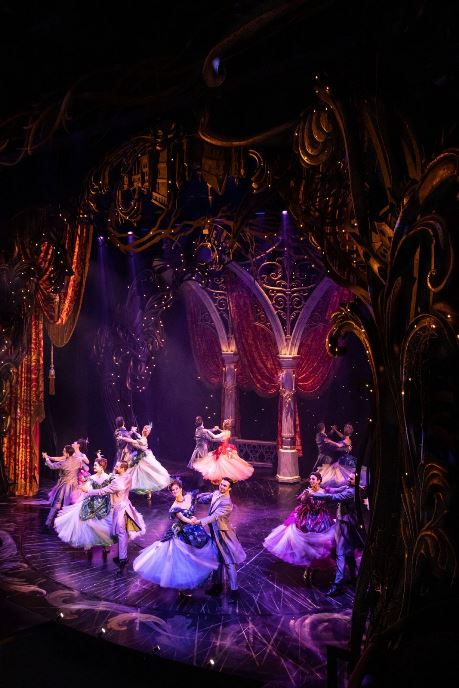
Upon entering the theater, Gabriela Tylesova’s dazzling scenic design, with a proscenium arch of gilded curvilinear foliage, a motif that continues onto the stage curtain, transports the audience into a beautiful fairytale world. The lavish sets continue with each changing scene, from the medieval-style townscape with its high pointed rooflines to the dense and hazy green forest, the home Cinderella shares with her wicked Stepmother and stepsisters (with the central period-style fireplace she is required to clean, from which her name is derived), the rooms of the royal palace, including the Queen’s richly furnished Rococo boudoir and the grandiose ballroom where the people of Belleville dance, the Godmother’s shop filled with sparkling crystal accessories and glass slippers, and the interior of the church in which the Prince’s wedding takes place, with its rose window flanked by Gothic arches, all carved with intricate tracery. The exquisite sets are enhanced by Bruno Poet’s dramatic and colorful lighting, as are the moods and themes of the production, including the rainbow hues that illuminate the church’s windows.
In addition to the quality of the artistic design are sumptuous waltzes performed by the company in ballgowns and tails (choreography by JoAnn M. Hunter; costumes by Tylesova). The underlying message of the show is the need for acceptance and the importance of being true to yourself, with plotlines that are both gay- and outsider-friendly. And Jordan Dobson is irresistible as Prince Sebastian, capturing the down-to-earth personality of the underappreciated and overlooked younger brother of the missing Prince Charming, who is the only friend of Bad Cinderella (played by Linedy Genao – the first Latina to originate a lead role in an Andrew Lloyd Webber musical), but who, as “the spare” and now heir to the throne, is compelled by his mother to choose a bride at midnight at the ball. His vocally powerful and emotionally sensitive rendition of “Only You, Lonely You” is the musical highlight of the show.

Unfortunately, many other aspects of the production justify the titular monicker. While the intended message is commendable, the music is largely forgettable, the lyrics are filled with easy uninspired rhymes, and the narrative is incohesive and even contradictory. Among the most notable examples is the rebellious punk-style Cinderella, who, to the outrage of her appearance-obsessed co-habitants of Belleville (opening the show singing “Beauty Is Our Duty”), defaces a statue of Prince Charming with the graffitied words “Beauty Sucks.” But later, contrary to her adamantly espoused beliefs, pays a visit to her Godmother (Christina Acosta Robinson, here seen with a Botox needle instead of a fairy wand) for a makeover that conforms to the accepted ideal of long blond tresses and a sparkling gown to attend the ball and win the hand of Sebastian – who, as we’ve already seen, prefers her and her own style to that of the others. So why change? It makes no sense.
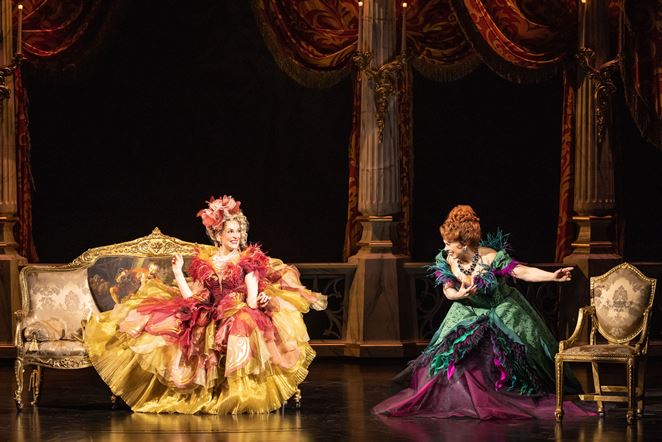
Under the direction of Laurence Connor, the updated version also maintains the long-held misogynist stereotypes of women who can’t get along with each other, compete, and catfight, as with the mean-girl stepsisters Adele (Sami Gayle) and Marie (Morgan Higgins), affecting Valley Girl accents, primping and posing, and constantly insulting Bad Cinderella (who gives it right back to them), and the controlling Stepmother and libidinous testosterone-intoxicated Queen (in over-the-top caricatural portrayals by Carolee Carmello and Grace McLean), exposing each other in the song “I Know You” as social-climbing gold-diggers with lowly pasts in the peasantry and the sex industry. The Queen’s lustful persona is also seen in her bevy of ripped and shirtless male attendants The Hunks, inspired by the erotic Chippendales dance troupe, but dressed in skin-tight black pants and S&M straps and harnesses, and cavorting in “Hunk’s Song” and “Man’s Man.”
Much of the show’s humor is based in similar sexual innuendo (and overtness), as with the chest-baring townsmen offering hot “Buns ‘n Roses” for sale, the stepsisters and other vain contenders for betrothal to Sebastian in skimpy figure-hugging outfits that represent a mash-up then and now, and a surprise twist involving Prince Charming (Cameron Loyal). There are also abundant references to pop culture (including, along with the aforementioned examples, Cinderella’s jibe at her not-too-bright stepsisters, “Math is hard” – a quote from the talking 1992 so-called “Math-Anxiety” Barbie doll that incited educators, feminists, and the East Village performance artists known as The Barbie Liberation Organization to demand it be pulled from store shelves for its demeaning sexist attitude).
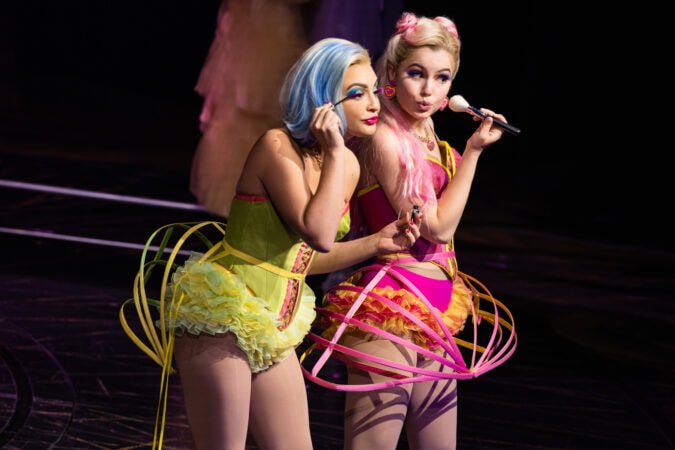
The cast (rounding out the company are Raymond Baynard, Michael Baerga, Lauren Boyd, Tristen Buettel, Kaleigh Cronin, Josh Drake, Ben Lanham, Angel Lozada, Mariah Lyttle, Sarah Meahl, Christian Probst, Larkin Reilly, Julio Rey, Lily Rose, J. Savage, Tregony Shepherd, Dave Schoonover, Paige Smallwood, and Aléna Watters) is committed to the jokes and the anachronisms, and depending on your taste, you might find it all laugh-out-loud funny, high camp, and entertaining, or groan-inducing and juvenile, inconsistent and meandering, and more dated than updated. Either way, at least the sets and lighting of Bad Cinderella are stunning.
Running Time: Approximately two hours and 20 minutes, including an intermission.
Bad Cinderella plays through Sunday, June 4, 2023, at the Imperial Theatre, 249 West 45th Street, NYC. For tickets (priced at $58-318, plus fees), go online. Masks are no longer required but are recommended.


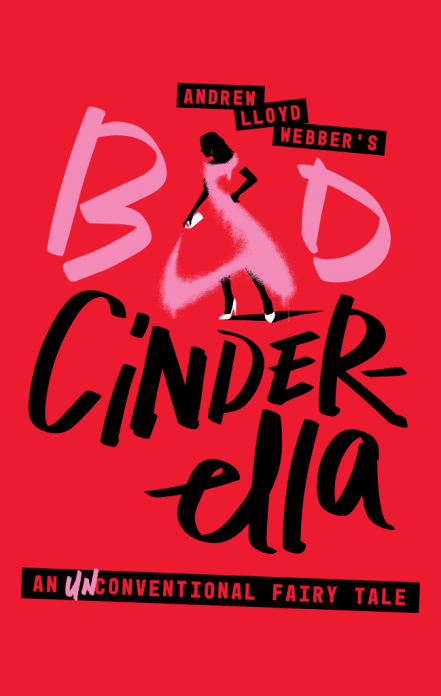


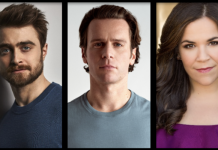
Originally scheduled to play through September 3, an earlier closing date of June 4, 2023, has been announced for Bad Cinderella, which will mark the first time in 43 years that Andrew Lloyd Webber hasn’t had a show on Broadway.